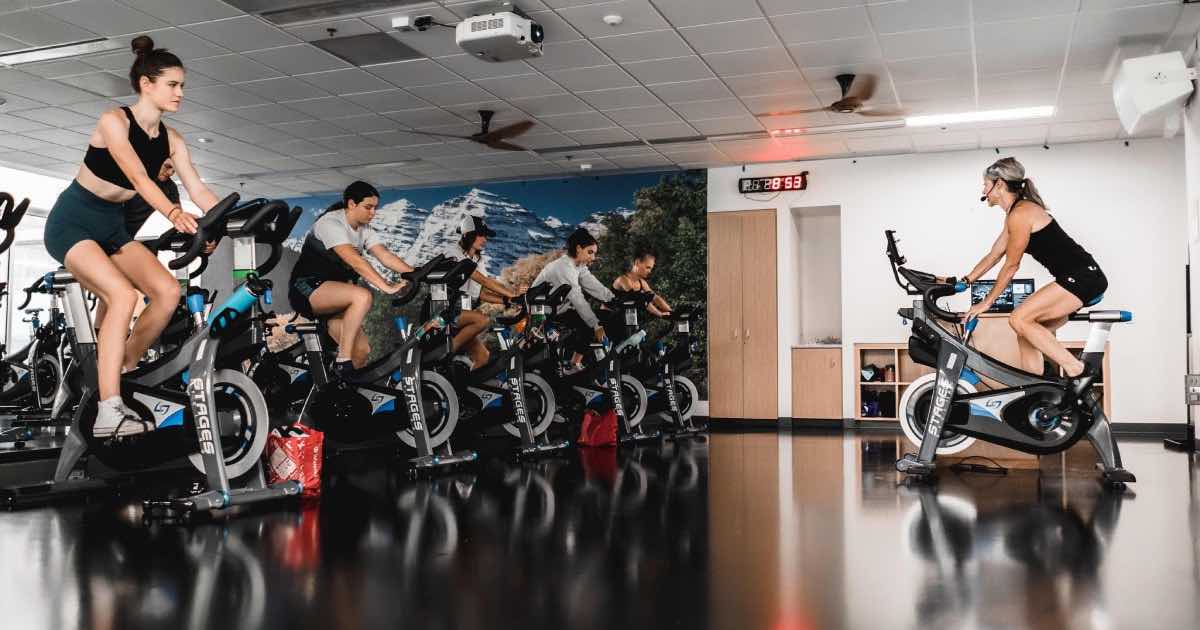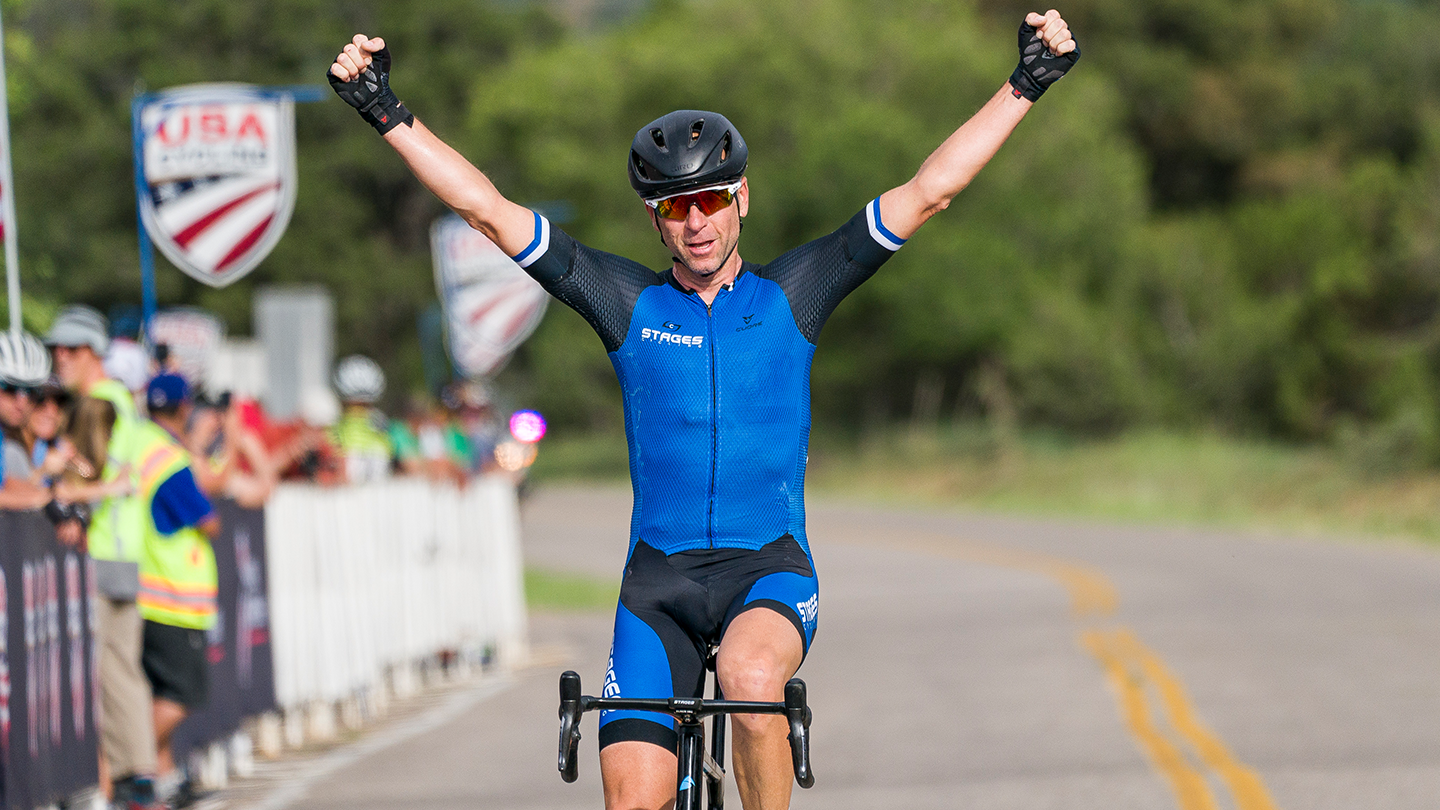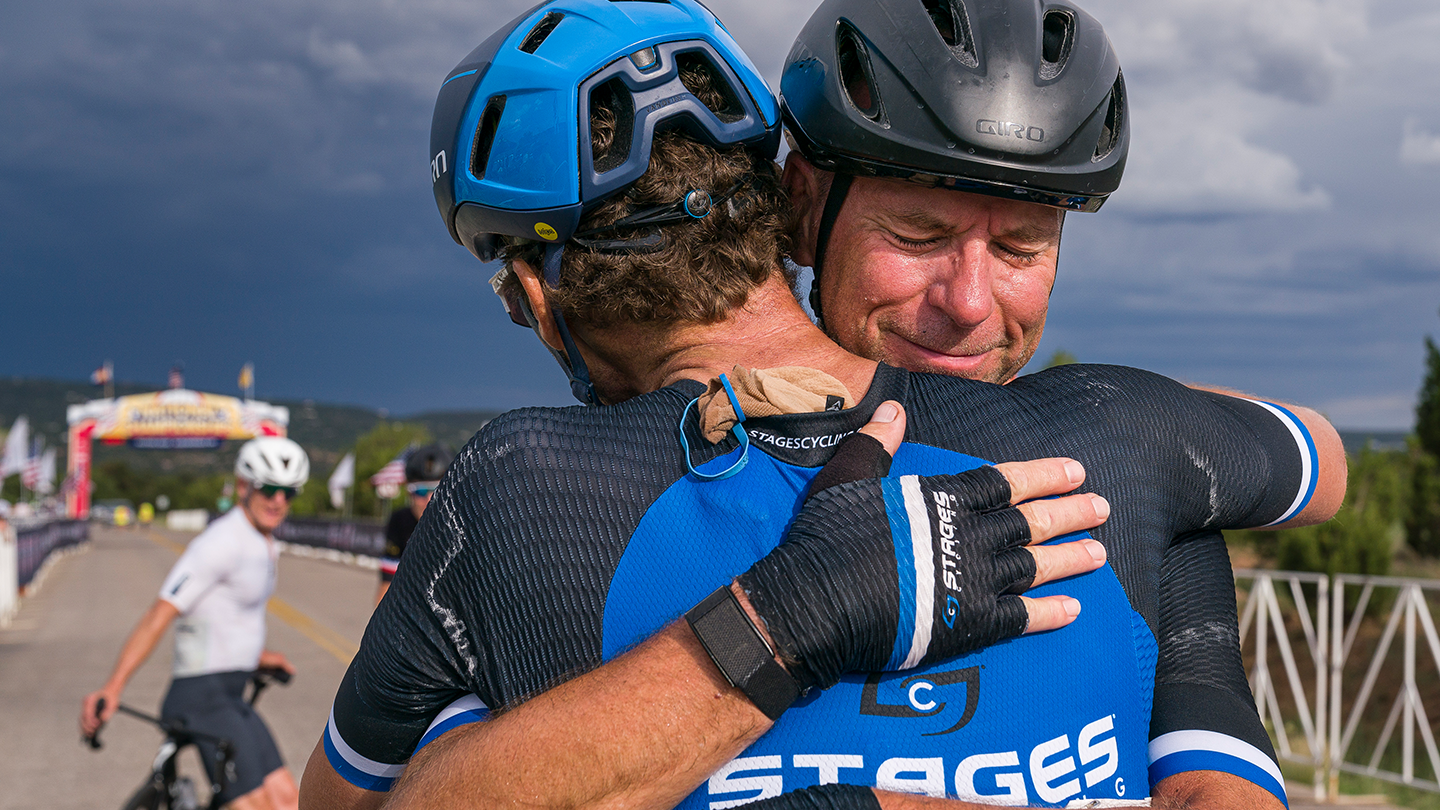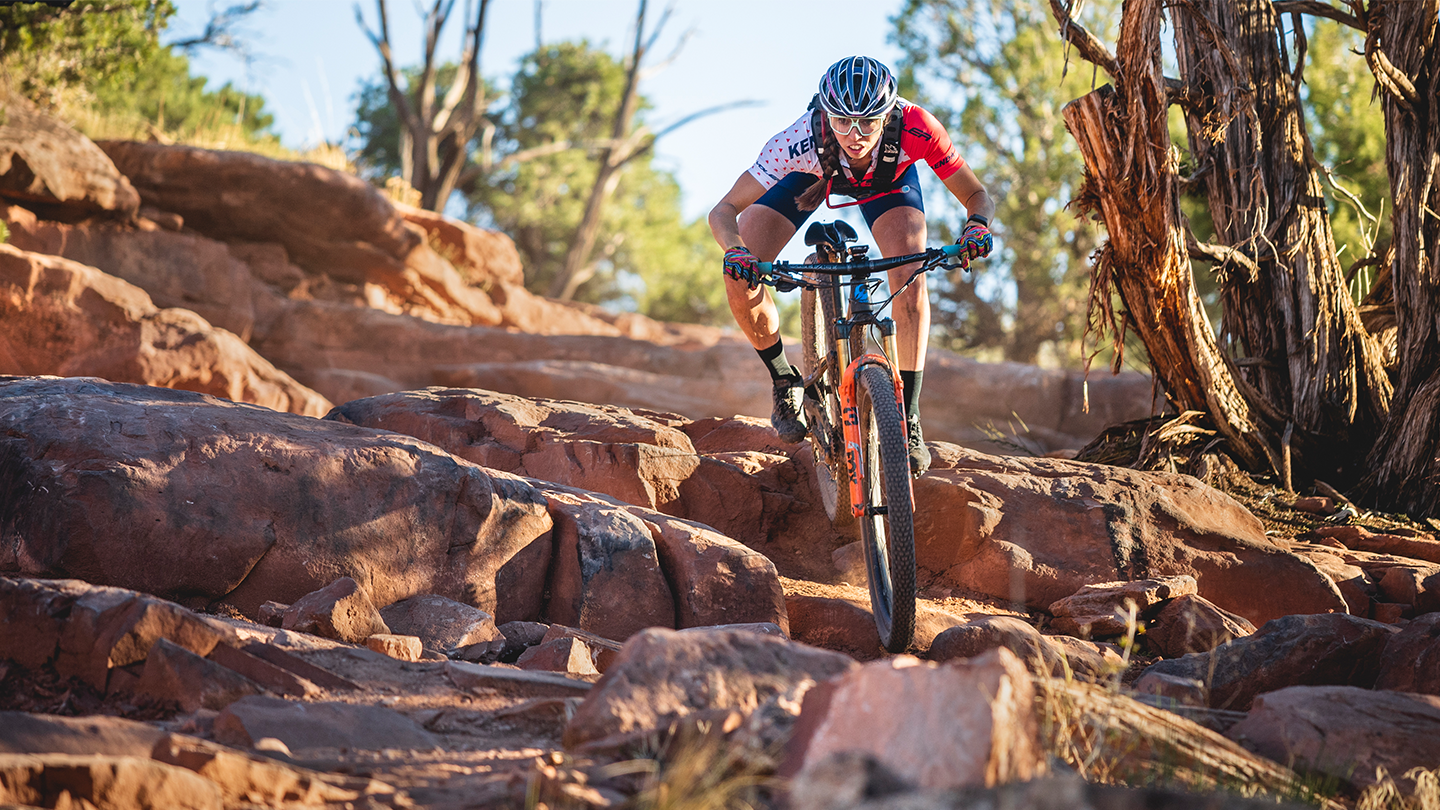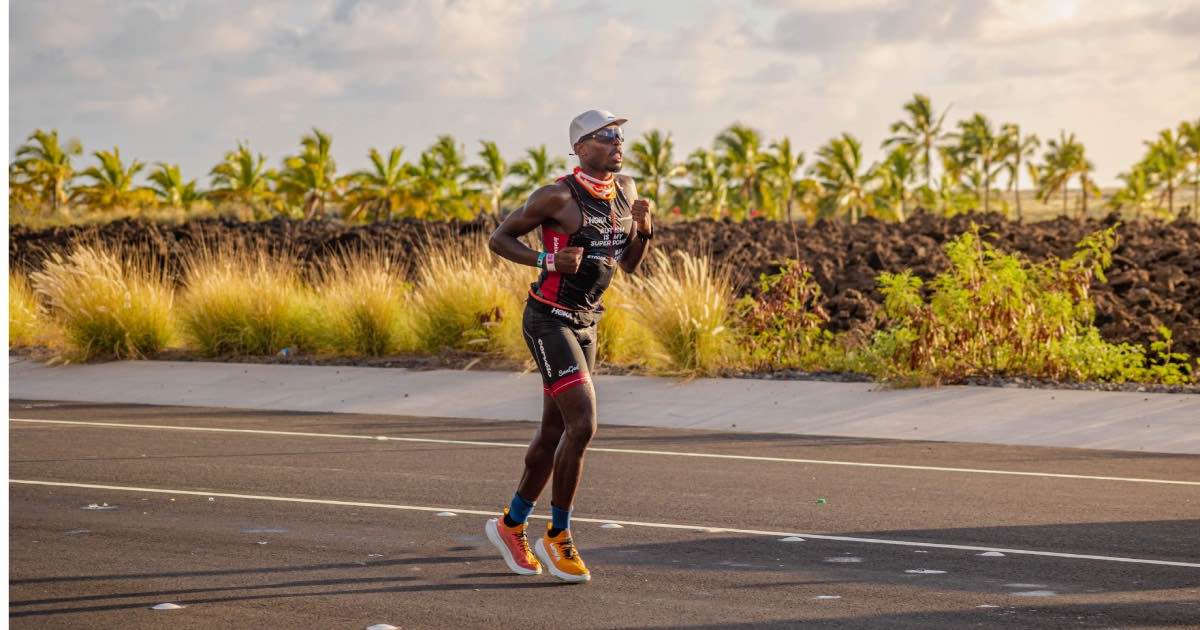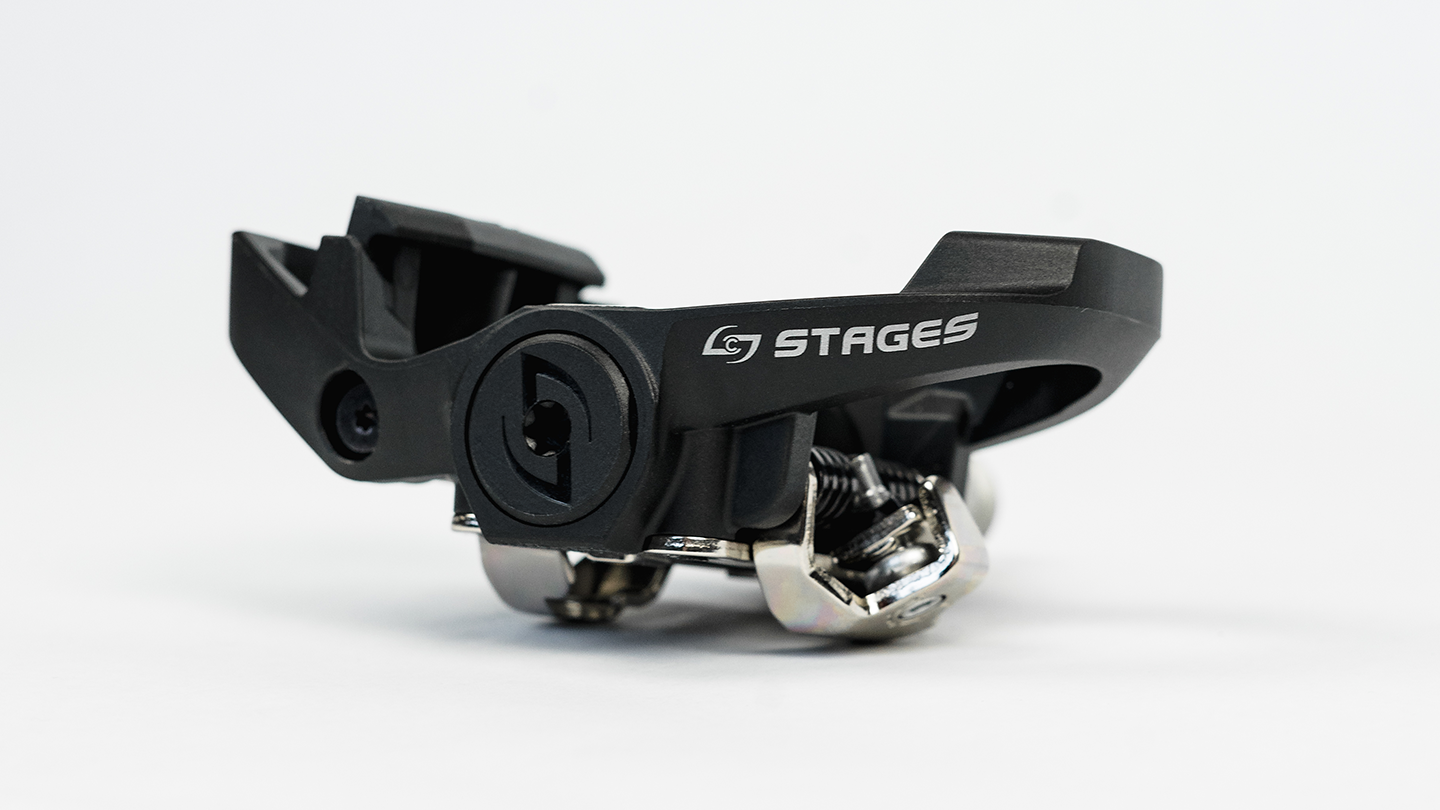How to Prepare for a Road National Championship
- By Benjamin Sharp
- Published: 14 Sept 2022
- Last Updated: 8 Oct 2022
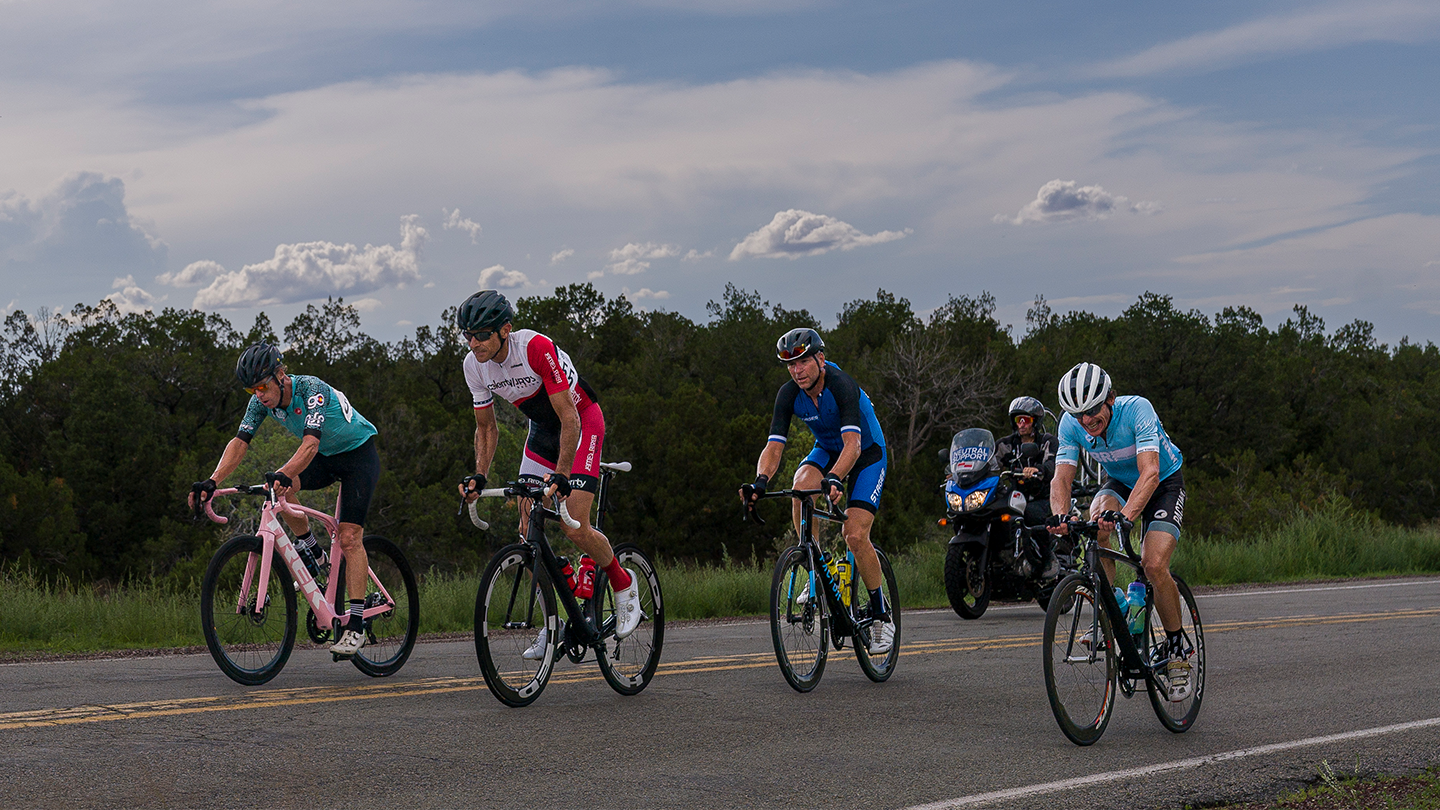
The USA Cycling Masters Road National Championships were contested in early August, near Albuquerque, NM. The annual event brings together athletes from all over the country to compete for the title of national champion in the time trial, road race, and criterium events. National champions are crowned in 5-year age groups starting with the 35-39’s up to the 85+ age group.
I’m Benjamin Sharp, the Power Education Specialist at Stages Cycling. I have also been racing bicycles off-and-on (mostly on) for more than 30 years. I have been a cycling coach for about twenty years and own and operate Sharp Coaching with my wife. Formerly I was a national team cycling coach for USA Cycling and have had the opportunity to work with athletes from Olympic Gold medal winners to those that are jumping off the couch looking to improve their quality of life; and everyone in between.
I’ll provide a narrative of the winning ride in the men’s 50-54 national road race. In addition, I will do an analysis of how I prepared for the event and take a look at the Stages Power data that was recorded by my Stages Dash head unit.
Season Leading Up to Masters Road National Championship
Nationals was a “maybe” goal for me this year. My winter training was truncated due to an injury that had me off the bike for about six weeks. Once I healed up, I had an eventful spring and summer of riding highlighted by a trip to France to ride the Haute Route Pyrenees. Thanks to my wife, Jennifer, it was a BIG birthday trip for my BIG 5-0 birthday.
The event consisted of riding some of the famous climbs in Southern France for five days. To prepare for the ride, from my home in Boulder, I logged many hours training in the foothills and mountains in the front range of Colorado. The French route stacked a few days with more than 10,000 feet (~3100m) of elevation gain, back-to-back.
To prepare, I even did a five-day “personal Haute Route” in May where I simulated the mileage/hours/and elevation gain we were going to be challenged with come July. I’ve never been a great climber so taking on this endeavor was a bit daunting but also a refreshing change from my typical annual diet of criteriums and track races.
After surviving the Haute Route, Jennifer and I stuck around France for another week, rented a campervan, and followed the Tour de France for a few days in the Alpes. We got to see the finish in Megeve as well as Tom Pidcock’s throttling of the breakaway before his assault up the Alpe d’Huez. This was a bucket list trip for me and I’m very thankful to have been able to enjoy it with my favorite travel companion.
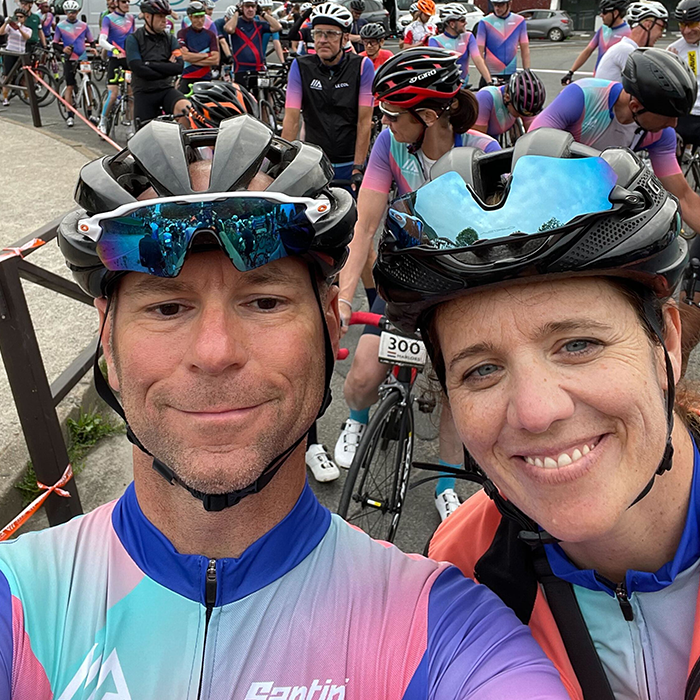

As expected, I was pretty exhausted by the time we returned to the U.S. in mid-July. For the next week or so, I rode very easy (or not at all) then decided to do a couple tester events to see if the road national championships might be in the cards for me.
First, I participated in the 100-mile Foco Fondo. Then, a few days later, I did a local mid-week training criterium in Golden. My goal was just to see how my morale was as well as my fight to compete and overall race fitness. Truth be told, neither the fondo nor the criterium went that well. The Foco Fondo started off okay, but I was hamstrung (literally) by cramping about three hours in and limped home the next couple hours. The criterium affirmed what I already knew, that I hadn’t raced in almost two months. I had limited speed, even more limited acceleration, and no ability to maintain or recover from a high-power output. I was relegated to just sitting in the bunch throughout the training race.
As a result, I decided against making the trip to Albuquerque with my teammates for the national championships. It wasn’t so much that I didn’t think I would have fun. Linking up with my teammates for travel races is always a good time. It was just that I didn’t think I was properly prepared. I didn’t really want to spend the money and time to go if I couldn’t be competitive.
However, as fate would have it, a teammate ended up not being able to attend. He had already registered for the event and suggested that he could transfer the entry to me. It wasn’t much of a nudge but it was enough to make the trip that little bit easier so just like that, I changed my mind and opted to join my Stages Cycling teammates in ABQ.
Fitness For Masters Road National Championship
Since my trip to France, my Chronic Training Load (CTL) or, average Training Stress Score (TSS) over the previous 3 weeks had been waning. Turns out that riding approximately 30 hours per week isn’t sustainable when working full-time! However, by the time the road race came around, my CTL was still 90, which rivals my peak value in any given season. The big boost in fitness from France, and preparing for France, meant that I could go into the road race fit and fresh.
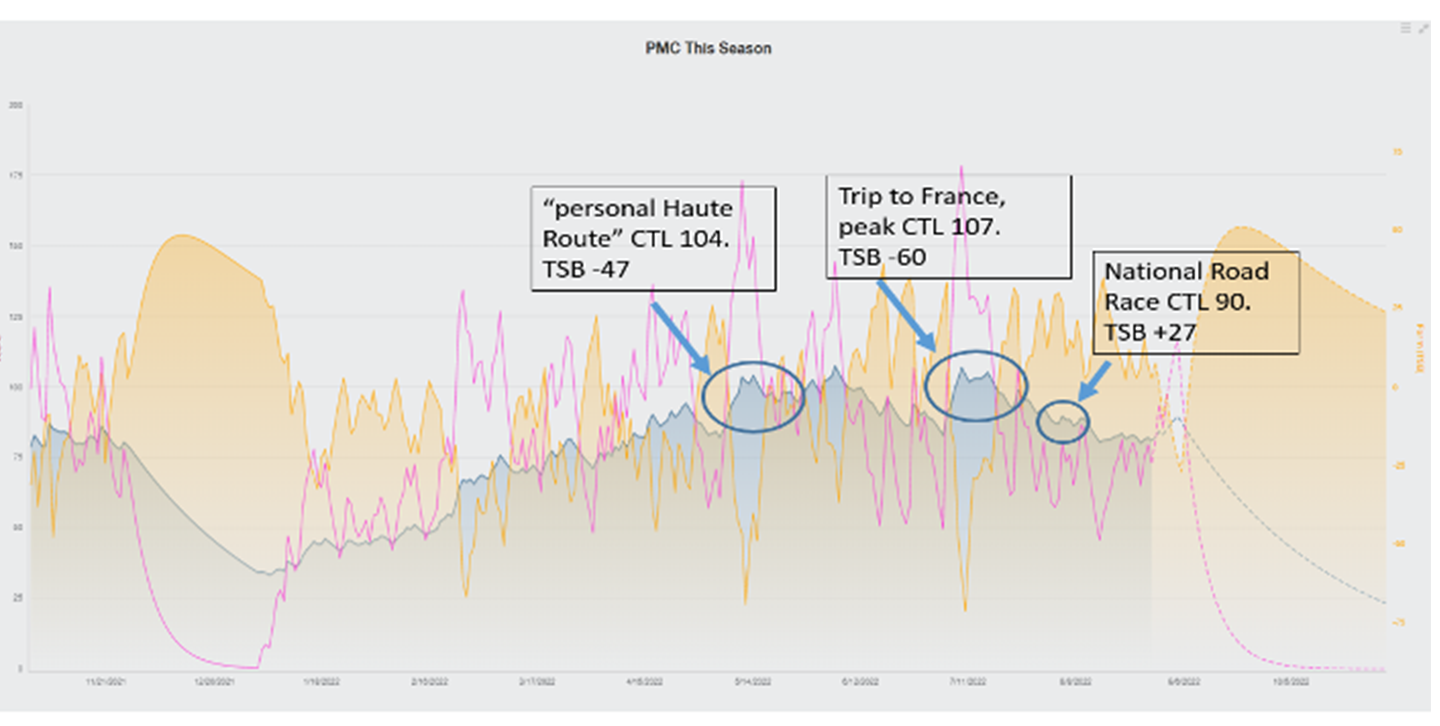

Course Recon and Race Planning
Once I decided to do the race, my teammate and Stages Senior VP, Pat Warner and I spent an hour or so poring over his power file from the national championships in 2021. Fortunately for us, the race was held on basically the same course, with a minor change to the finish. As the defending champion, Pat had a lot of insight on how to ride the race and how to best tackle the course. The race covered two laps of a 50km (30 mile) loop. There are two main features to this course.
The first obstacle is a very steep but short climb, fittingly known as “Heartbreak Hill” that comes about 16km (10 miles) into each lap. The second challenge is the relentless wind, which on the day was forecast to be from the west, meaning the 16km (10 miles) stretch before the last, short slight downhill section to the finish of about 2.5km (1.5 miles) would be in a block headwind. This is the kind of road where it’s good to have riders to draft off of. For me, the bad news was the hill. But, the good news was the wind. As I like to say (as a bigger rider), “big guys like wind”.
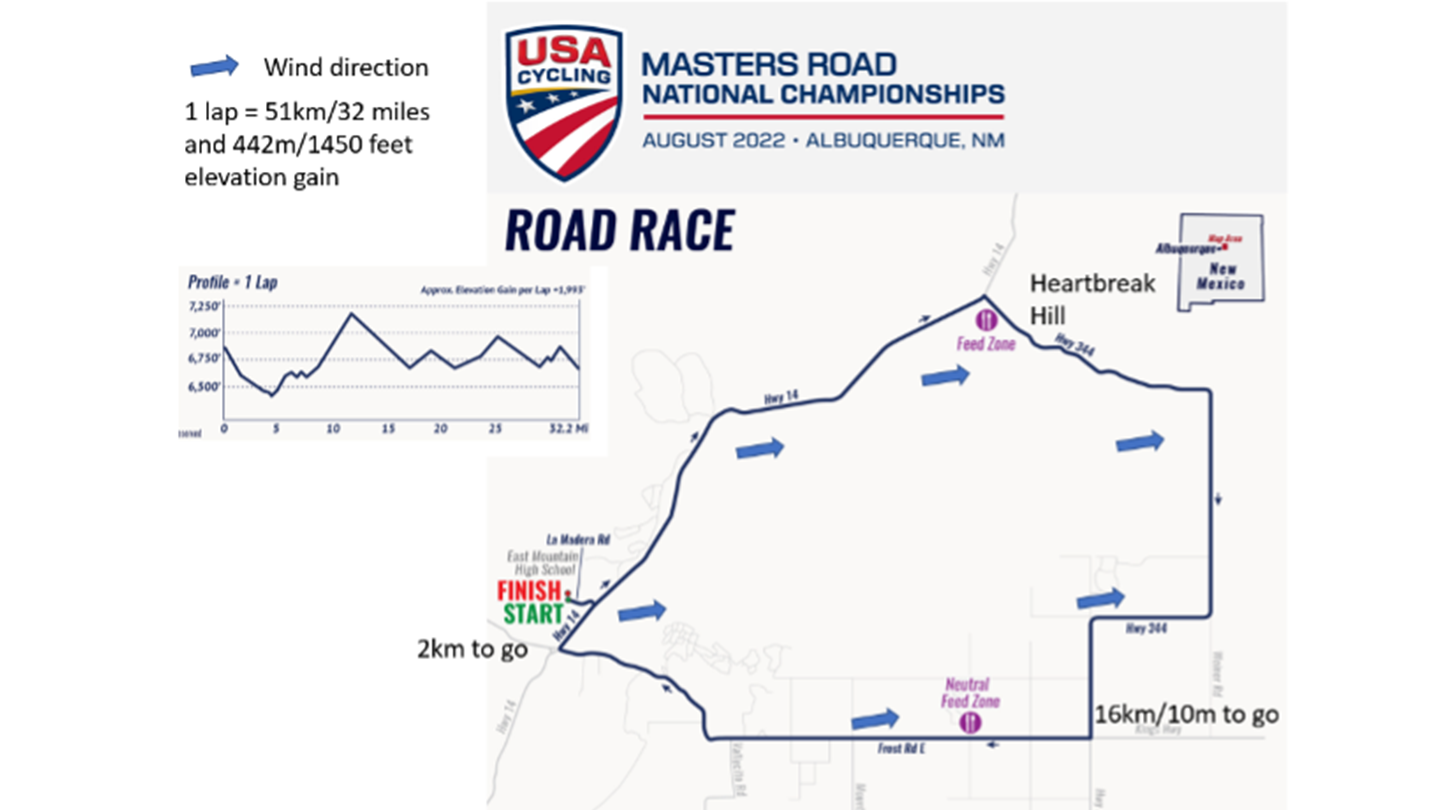

After my discussion with Pat about the race, I have to admit, I was pretty discouraged. Pat and I weigh a similar amount and we observed that in his bid for victory in 2021, Pat ascended the first climb with an average power of 437w for 4 minutes (about 5.6 w/kg). This is approximately 40 watts higher than my CAREER BEST recorded power output for that duration.
Even more disheartening was despite that monstrous power output, Pat got dropped the first time up the hill and had to chase for a few minutes to get back to the front group. So, I was 40 watts off what it would take to get dropped by 30 seconds. Ugh. This meant that to be successful in the race, I was going to have to execute a different ride than Pat did in 2021.
Spoiler alert: I did nothing close to this power the first time up the climb, more on that in a future entry.
What did provide some hope was that due to the early placement of the hill, there was a ton of racing that remained after the two times up Heartbreak Hill. This means it is possible that the hill wouldn’t become the deciding factor in the road race. From Pat’s 2021 file, we estimated that nearly an hour of rolling, windswept roads would be the challenge.
In 2021, on the second ascent of Heartbreak Hill, Pat found himself maybe 20s off the back of a group of four. He was able to make the junction with those four on the downward trending road to the south with no other riders gathering at the head of the race. So, while there was hope for me to have an impact on the race but, it was a bit dim.
Masters Road National Championship Gear Selection
One other topic of discussion with regards to the climb centered on gear selection for the event. I run a 50/37 front chainset and Pat and I determined that I would definitely benefit from using a cassette that would allow me to spin as much as possible on the climb. So, rather than use the 10/28 I might normally have on my bike for a road race, I swapped out my cassette for a 10/33. I’m so glad I did. As it turned out, the first time up Heartbreak Hill, I averaged 79 rpm with periods as low as 65 rpm. That’s a very low cadence for me as I find it difficult to effectively and efficiently produce power below 85 rpm. With the 28t rear cassette option, I would have been pedaling at a leg crushing 60 rpm on parts of the climb.
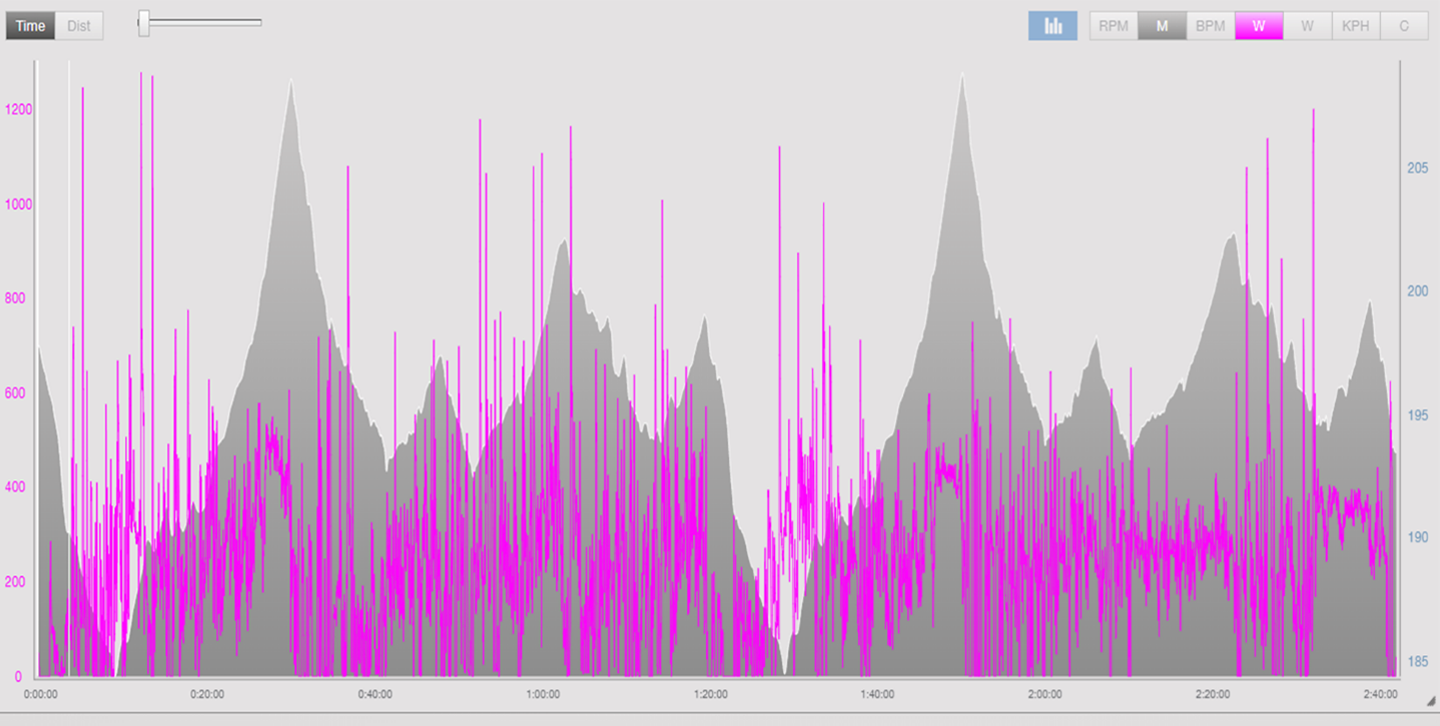

Pat’s 2021 race by the numbers:
- Duration: 2h40m
- Distance: 102km (63 miles)
- Average Elevation: 2084m (6837 feet)
- Elevation Gain: 1216m (3990 feet)
- Average Temperature: 32C (89F)
- Average power: 246w
- Peak power: 1279w
- Adjusted power: 302w
- Average cadence: 86 rpm (including 0’s or non-pedaling events with speed recorded)
- Average speed: 38.2kph (23.9mph)
- Peak 1m power: 498w (first time up Heartbreak Hill)
- Peak 5m power: 407w (first climb up Heartbreak Hill)
- Peak 10m power: 346w (lead in and first climb up Heartbreak Hill)
- Peak 20m power: 304w (lead in and first climb up Heartbreak Hill)
- Peak 60m power: 271w (last hour of the race)
In 2021, Pat didn’t have any teammates in the same age group. For 2022, he and I would make up a team of two as most of our Stages Cycling teammates, while masters-age riders, are in younger age groups. Our strategy was pretty simple. Since neither Pat nor I are particularly light or fast climbers, we just wanted to make it over the climb within touching distance of the front group on the second lap and see what happens.
Individually, we agreed that if either of us got dropped, the other one would try to stay in, or make it back to the front group and not initiate any aggressive attacks until we knew that a) the other one made it back to the group or b) we were pretty confident the other one was not going to be able to make it back. After that, we would try to capitalize on our big(ger) bodies and ability to ride well in the wind and on the flats to try to create separation and come to the line in a reduced group.
The next entry to this series will feature details of the opening portion of the race.
Top Photo Credit: Craig Huffman











